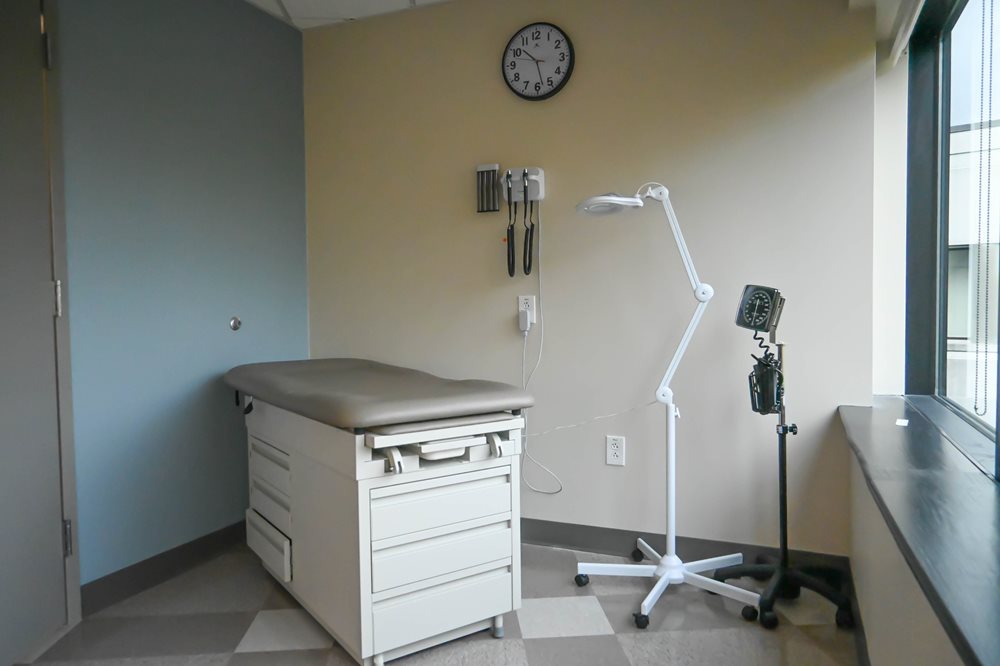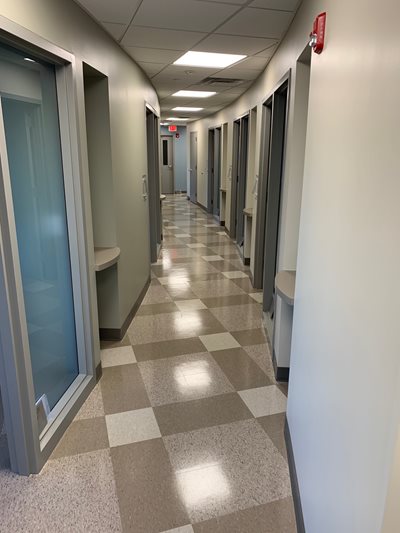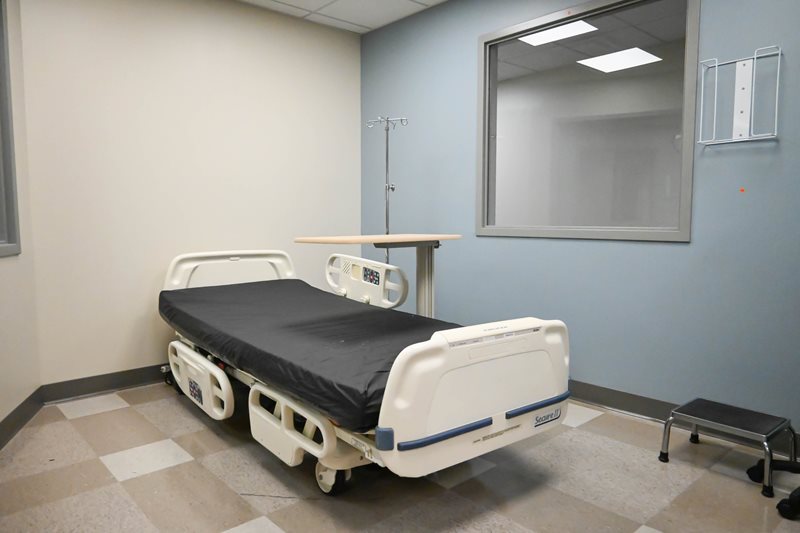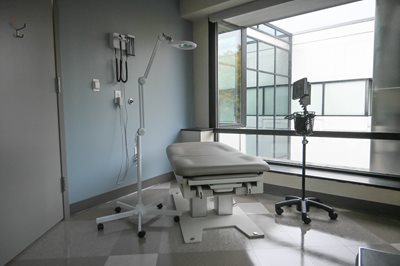In early September 2020, Donna Agnew, MSPAS, PA-C, DFAAPA, director of the University’s Physician Assistant Studies (PA) program, checked in on the renovation project that had been going on for several months on the fourth floor of the Elkins Park campus.
A $500,000 grant from the Pennsylvania Redevelopment Assistance Capital Program (RACP) made this specific project to improve classrooms and lab space possible. The first and second phases, which consisted of minor renovations to the existing Clinical Assessment Lab, including a new ceiling and improved lighting, were complete. Then, workers concentrated on one of the most exciting parts of the project — creating a brand new Standardized Patient Simulation Lab.
 By the time Agnew peeked her head in to check out the progress of the project in September, it had started to take shape. It was then that the reality and scope of what was happening became apparent.
By the time Agnew peeked her head in to check out the progress of the project in September, it had started to take shape. It was then that the reality and scope of what was happening became apparent.
“I realized that this [space] was going to afford our students that feeling of being right across from the patient,” she said. “It had turned out even better than I anticipated because when you’re looking at the dimensions on an architect’s drawing, it’s hard to gauge size and shape.”
Amie Leighton, project manager at the University and a licensed architect for more than 20 years, oversaw the renovations and made sure to turn those designs into a reality.
“It looks great. The spaces have a lot of natural light, which we worked hard to build in. It’s exciting that the students will have this space. Since it looks like a doctor’s office, it really should be a good teaching tool for the program,” said Leighton.
According to Agnew, the renovation has allowed the PA program to more than double its clinical lab space. The Clinical Assessment Lab, used for experiential components of the program’s physical diagnosis course, includes a 10-bay open area for students to learn the technique of performing a physical examination. The simulation space will allow students to participate in both instruction and practice, as well as formative and summative assessments of their clinical and patient care competencies. It will also allow for standardized patient encounters, emergent and acute patient case scenarios, and management of chronic medical conditions.
 The space will also afford the program the ability to expand the technical procedural skills taught. Currently, students suture, splint, cast, perform injections and venipuncture, and gain intravenous and arterial access.
The space will also afford the program the ability to expand the technical procedural skills taught. Currently, students suture, splint, cast, perform injections and venipuncture, and gain intravenous and arterial access.
“There's numerous skills that are required of physician assistants from a primary care perspective that we currently teach,” said Agnew. “By having this space, we'll be able to expand the types of skills that we teach in addition to enhancing our ultrasound instruction that we started last year. So we're really excited to have this opportunity for students.”
In preparation for the renovation, PA faculty members toured other simulation centers at Temple University, DeSales University, University of the Sciences and the Philadelphia College of Osteopathic Medicine (PCOM), and met with PA faculty from those institutions, before drawing up the plans with Leighton and the University’s chief of staff, Brian Zuckerman.
“The program directors at these institutions taught us about lessons learned from their designs to better guide and inform our planning,” said Agnew.
The renovation space had originally been an underutilized research area. According to Leighton, some of the research space was consolidated to make room for the lab expansion.
 Another advantage Agnew sees for the program is the close proximity to the program’s faculty offices. “It’s a lot easier for us to keep our fingers on the pulse of what’s going on - the proximity to our faculty and staff offices is really helpful,” she said.
Another advantage Agnew sees for the program is the close proximity to the program’s faculty offices. “It’s a lot easier for us to keep our fingers on the pulse of what’s going on - the proximity to our faculty and staff offices is really helpful,” she said.
The PA Class of 2021 has already used the space for its fall “boot camp,” which provided an opportunity for them to practice their clinical and technical procedural skills before starting clinical rotations, Agnew said.
Training of standardized patients will soon begin in preparation for the student patient care assessments planned for the 2021 academic year. Additional training models and simulators have also been purchased to expand the program’s array of technical skills taught.
Additionally, Agnew has reached out to Briarwood Home Owners Association, a local neighborhood group, to identify any interest in training to become a standardized patient for the PA program. A standardized patient is an actor who functions as a “patient” to facilitate student learning.
 “I think it would be great to get the local community involved and see our students in action,” she said.
“I think it would be great to get the local community involved and see our students in action,” she said.
Agnew had high praise for Leighton and her management of the project, as well as the Research Department for giving up some of its space to help the PA students.
“Amie was really great to work with. For someone who doesn’t have a medical background, she had a keen eye for what was needed and asked all the right questions,” said Agnew. She is also grateful to the Salus Research Department, which relinquished some of its existing space for repurposing, to the Commonwealth, for its grant funding used to facilitate the renovations, and to the University’s leadership for its generous support.
“In addition to the many advantages the facility brings to student learning and assessment for all Salus students, the simulation center also allows the program to expand its inter-professional initiatives and remain competitive in the current marketplace,” she said.